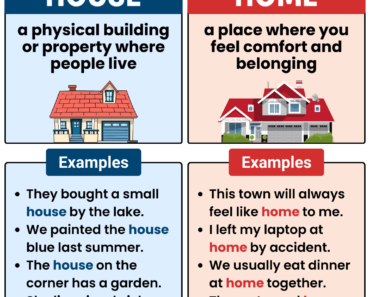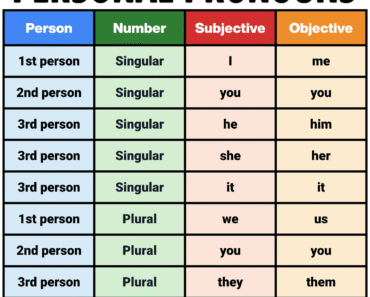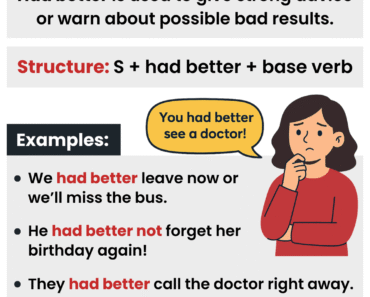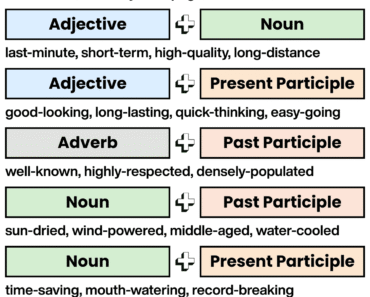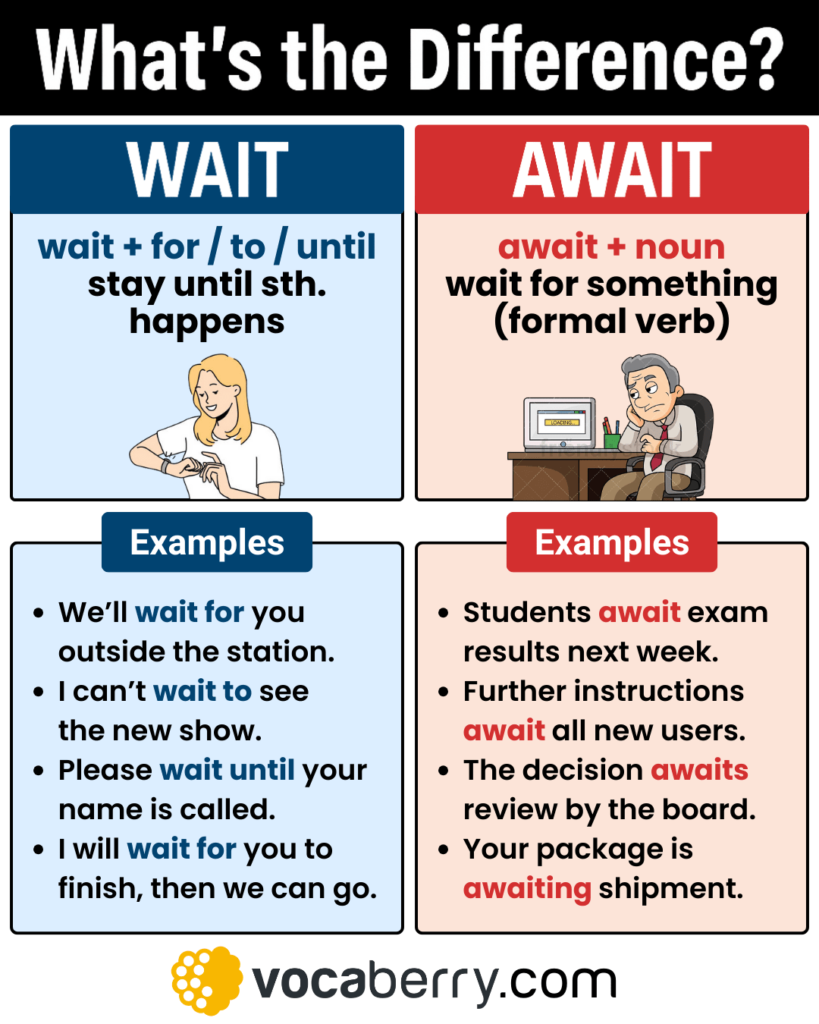
Wait and await both relate to staying until something happens, but they are used in different ways. Wait is the everyday verb used with prepositions and infinitives. Await is more formal and takes a direct object without a preposition.
In this article, you’ll learn the difference between wait and await, with clear definitions, grammar tips, and useful examples to help you use them correctly in English.
What Does “Wait” Mean?
Wait means to stay or delay until something happens. In English, you cannot say “wait something.” Instead, you:
Usage:
- wait for + noun/pronoun → wait for the bus, wait for her
- wait to + verb → wait to start, can’t wait to see you
- wait until/till + a time or event → wait until Friday, wait until it stops raining
Examples:
- We’ll wait for the next train.
- I’ll wait until you finish your call.
- I can’t wait to see the new movie.
What Does “Await” Mean?
Await means to wait for something, but it is more formal than wait and is always transitive. That means it takes a direct object and does not use a preposition. You’ll often see it in formal English such as emails, notices, or official writing. Typical objects are things like results, approval, confirmation, decision, response. It is rarely used with people in everyday English.
Usage:
- await + noun → await approval, await a reply, await the results
- be awaiting + noun → We are awaiting confirmation
- incorrect → await for, await to + verb
Examples:
- We await your response to the proposal.
- The lab is awaiting confirmation from the hospital.
- The company still awaits government approval.
Example Sentences Using Wait and Await
These examples show how wait is used with prepositions, while await is followed directly by a noun without a preposition.
Example Sentences with Wait
- We’ll wait for you outside the station.
- Please wait until your name is called.
- I can’t wait to start my new job.
- They waited for the rain to stop before leaving.
- She waited quietly in line for twenty minutes.
- Let’s wait here and see what happens.
- He waited for his sister at the school gate.
- We’re waiting on a final decision from the manager.
- Could you wait a moment while I check the file?
- They waited out the storm at a café.
Example Sentences with Await
- We await your response to the proposal.
- The lab is awaiting confirmation from the hospital.
- Students await the release of exam results.
- Further instructions await all new users after registration.
- The company still awaits government approval.
- Your order awaits shipment; thank you for waiting.
- The decision awaits review by the board.
- Travelers await updated guidance at the airport.
- Several emails are awaiting your signature.
- A warm welcome awaits guests at the hotel.
FAQs About Wait vs. Await
What is the difference between wait and await?
Wait is the everyday verb and is used with for, to, or until. Await is more formal and takes a direct object with no preposition. Examples: We’ll wait for the bus. We await your reply.
Do we say await or await for?
Say await only. Do not add for.
Correct: We await confirmation.
Wrong: We await for confirmation.
Is await more formal than wait?
Yes. Use await in emails, notices, and official writing. Use wait in everyday speech and most writing. Examples: We await approval. I’ll wait until Friday.
Awaiting your response vs waiting for your response: which is better?
Both are correct. Awaiting your response is more formal and concise. Waiting for your response is neutral and common. Choose based on tone.
Wait until vs wait for: when do I use each?
Use wait until with a time or clause. Use wait for with a noun or pronoun. Examples: Let’s wait until it stops raining. Let’s wait for the taxi.
Can’t wait meaning and usage
Can’t wait means you are excited or eager. Examples: I can’t wait to see you. We can’t wait for the results.
Are awaiting vs are waiting for: what is the difference?
Are awaiting is formal and followed by a noun with no preposition. Are waiting for is neutral and followed by for + noun. Examples: We are awaiting approval. We are waiting for approval.


